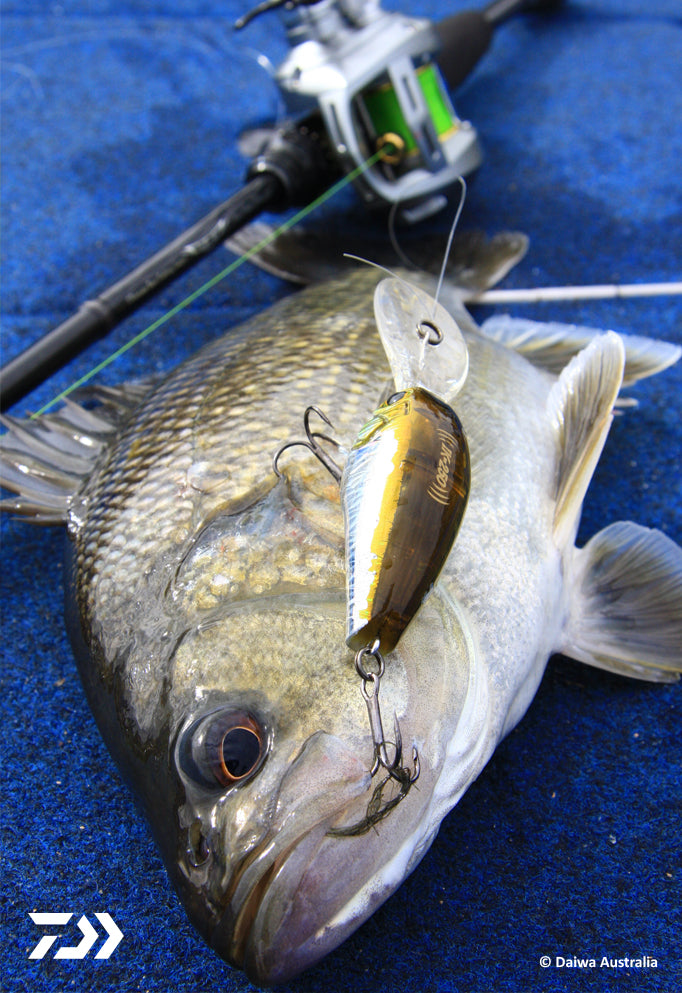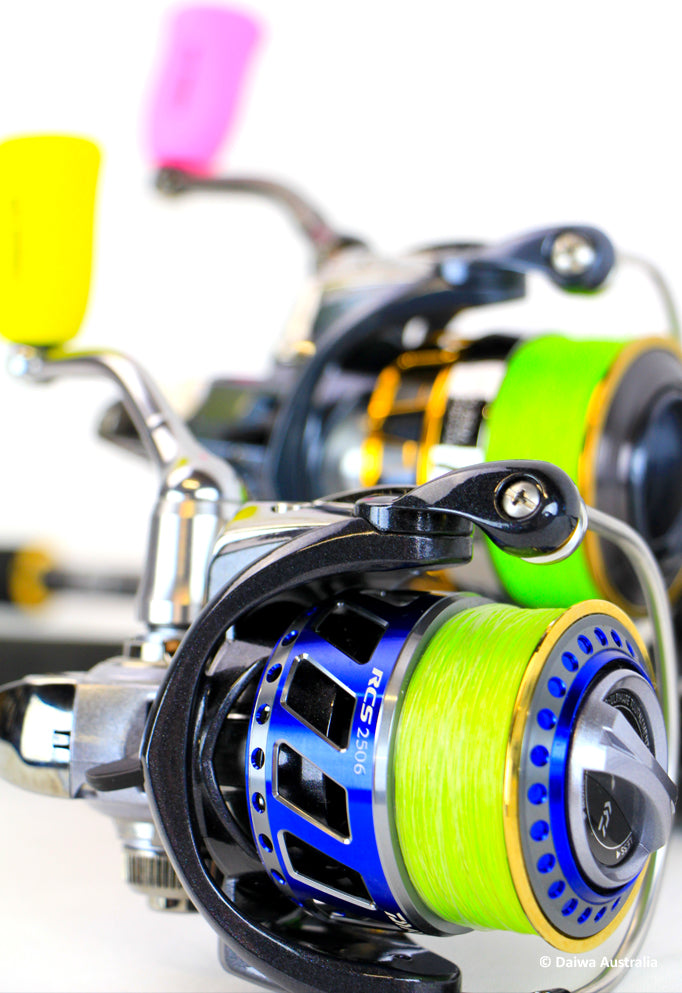Fishing Tips: Fishing Line Explained
Posted on
Written by Simon Goldsmith. Line can be a confusing tackle item to get your head around. Today’s anglers are spoilt for choice with new technologies, designs and fishing styles seeing tackle store walls littered with a tonne of line types and styles that can leave an angler scratching their head about what to buy and what to use.
So with that in mind let’s try and break it down and make it easier to understand the line up of lines available.
How Many Pieces
Line essentially falls into one of the two categories, Monofilament or Microfilament.
Monofilament is the family of lines that have one strand of line, such as traditional mono line and the more modern fluorocarbon line, while the microfilament class contains multi stand braid/PE lines. It’s not just as clear-cut as that though and within the monofilament and microfilament categories there are many sub categories. Let’s take a look at the most common and popular subcategories and outline the why and when of their use.
Monofilament
Mono is the line that most of used when we first started fishing. Mono is made from polymers that are heated and extruded to a desired thickness to make line of a desired strength.
Economical to produce and available in a variety of colours and with differing levels of softness, stretch and memory, mono is a line that comes with its share of positives and negatives. Let’s take a look at them.
Pros: a great all-round line suitable for a wide range of fishing types, good knot strength, generally easy to cast, has low visibility, and in most cases has good abrasion resistance.
Cons: can have a lot of stretch, retains memory, floats, absorbs water, and deteriorates with UV exposure.
Best application: great line for beginners, suitable for all reel types, and is low cost.
Daiwa Products: Sealine (6lb) is my line of choice when it comes to spooling up my kids spin reels for chasing catfish down the river, and bream and whiting on the Gold Coast.
Fluorocarbon
In many ways fluro is the modern advanced version of mono. While more expensive than mono it addresses many of mono’s negatives, but of course brings its own list of shortcomings.
Pros: denser than water which allows it to sink, low stretch, extremely low visibility, excellence abrasion resistance, does not absorb water, more resistant to UV light than mono, and has good knot strength.
Cons: stiffer than mono (especially in higher strengths), is more expensive than mono, sinks which is not always desirable (e.g. when fishing surface lures).
Best application: the go-to line for finesse crankbaiting and leader material for sub surface lure presentations, and excels in clear water situations.
Daiwa Products: Daiwa TDR Fluorocarbon leader is my go-to leader material. From 4lb for breaming to 30lb for chasing jacks TDR has me covered. Has great abrasion resistance and excellent knot strength.

Braid/PE/GSP/Fused
A style of line that has many different names. Regardless of the name all of these lines are essentially made from the same material, gel-spun polyethylene. A product that is generally referred to as its two common brand names, Spectra and Dyneema. This line (aka gel spun polyethylene) is then processed via a differing combination of braiding, fusing, and coating to then form the finished line. Let’s look at the pros and cons of braided line.
Pros: low stretch, thinner diametre than mono or fluro, allows greater casting distance, excellent sensitivity and feel, doesn’t absorb water, supple in texture and feel compared to mono or fluro, and resists UV deterioration.
Cons: high visibility in the water, limited abrasion resistance in some lines, not suited to old reels not designed for modern lines, can be tangle prone, expensive, requires specific knots for knots to hold.
What’s On Offer?
PE/braided lines are available in a variety of types. 3-strand, 4-strand, 8-strand, and increasingly 12-strands, are the most common terms used to describe the different braid line types, they of course have their pros, cons and optimum uses. Lets take a look at them.
3-strand: very much the entry level option, 3-strands as the name suggests is made of 3-strands of line, and is flat in profile. Less expensive than higher strand lines it also has a greater level of roughness in finish and feel. Not a great option to go for these days considering the higher strand options available on the market today.
Daiwa Products: none
4-strand: the most common braid type on the market. Smoother, rounder and delivering less noise than 3-strand, 4-strand is a great all-rounder and for those looking for an economical braided line.
Daiwa Products: One of the newest lines added to the Daiwa range, J-Braid 4 is a great line at a great price. Round in profile and with excellence abrasion resistance this is line suited to both spin and baitcasters. An excellent line that won’t break the bank.

Is Eight Enough?
8-strand– more strands means thinner strands which in turns results in a smoother, finer, quieter and overall thinner braided line. You’re getting into premium PE status once you hit the 8-strand mark, with most hi-end offshore jigging PE lines falling within this category. In lighter sizes 8-strand PE offers excellence casting distance and performance, while below the water delivers outstanding sensitivity, contact, and feel. While all sizes are suitable for spin reels you really don’t want to go any lighter than PE1 on a baitcasters due to its thin diametre and its willingness to dig-in on the spool.
Daiwa Products: If you’re on a budget then take a look at J-Braid, if you want to spend a little more to get something a little thinner, smoother and softer then Tournament 8 Braid Evo has your name on it whether your fishing spin or bait. I have a Battler 2500 spin reel spooled with PE 0.6 and a Tatula 103P baitcaster loaded with PE 1.0 and both perform flawlessly well. Like I said above I wouldn’t be inclined to go any lighter than PE 1.0 on a baitcaster.
The line that has served me well for a decade both on spin and baitcaster reel is TD Sensor. Constructed using Dyneema fibre this is line that has exceptional abrasion resistance and casting performance. Featuring a round profile TD Sensors lays flawlessly on the spool, while its hi-vis orange colour makes it ideal for lure casting when line control and identification is important. While not as thin as some of the newer lines on the market, this is a reliable line that I have plenty of confidence in. This line will always be a favourite of mine and there will always be a spot in my tackle line-up for it.

An Even Dozen
12-strand– we’re in ultra premium PE country here. Thinner and more refined and sensitive than anything else on the market, this is the choice for those looking for supreme performance. There are few 12-strand lines on the market and Daiwa have two of the best.
Daiwa Products: Morethan 12 is the ultimate choice for the light tackle enthusiast. Thinner, stronger and with improved abrasion resistance and less stretch Morethan is the new benchmark when it comes to PE performance. Featuring Daiwa’s UVF and +Si Evo Silicone technology nothing can match this line for smoothness, sensitivity, and casting performance. Available in sizes from PE 0.6 to 1.2 this is the light tackle PE with no peers. I’d really only use this on a spin reel though.

Saltiga 12 is the big brother of Morethan 12 and is true to the Saltiga name making it the ultimate choice for heavy-duty jigging and big game fish. Featuring the advanced technologies and attributes of Morethan 12, Saltiga 12 is colour coded for precision line control, while its ultra smooth finish minimises noise, friction, and unwanted line and guide heat during the heat of battle. Available in sizes from PE 0.8 to PE 10, this is the king of lines when it comes to big fish, advanced performance and heavy-duty spin reel power.
So there you have it a 101 on today’s fishing lines. Hopefully I’ve shed some light on line and provided an easy to understand breakdown on what’s on offer, and the things to keep in mind when choosing which line to use, and when and where to use it.

 Wishlist
Wishlist

